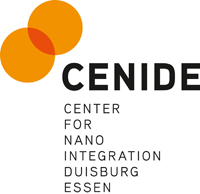Research Project 1
Investigation of the reaction kinetics of precursor systems in shock-wave and flow-reactor experiments associated with quantum chemical/statistical calculations
Many technologically important particle synthesis processes proceed via gas-phase reactions where gaseous precursors react to form condensed reaction products. The knowledge of the underlying kinetics is required in order to understand, simulate, and optimize the overall process.
The present proposal pursues thematically and methodically the ongoing work of the TP1 project. The aim is to investigate the gas-phase reactions as well as heterogeneous reactions of iron precursors in shock-wave reactors and in a flow reactor. The analysis of the experimental data is supported by theoretical work. The central topics of this phase are:
(1) Investigation of precursors kinetics in the shock tube and in the flow reactor: The main focus of this work is the determination of the kinetics of selected Fe and Si precursors. For species detection, time-of-flight mass spectrometry, gas chromatography and laser spectroscopy are used. For precursor reactions at lower temperatures and longer test times, a flow reactor is used. As an additional detection method in the flow reactor, laser-induced fluorescence is used in cooperation with TP7 (Dreier|Schulz) to quantify intermediate species (SiO, Fe, FeO).
(2) Investigation of heterogeneous reactions by supplying particles in the flow reactor and in the shock tube: heterogeneous reactions are of interest both in one-component (gas-particle interaction) and in mixed systems (for example, for the preparation of core-shell structures). In this context, the study of precursor decomposition in the presence of particles is of interest and should be carried out primarily in the flow reactor.
(3) Investigation of the reactions of Si-containing precursors with H and OH radicals: These reactions play an important role during the particle synthesis in flames. For time-resolved detection, reactions with H and OH species are monitored with atomic resonance absorption spectroscopy and ring-dye laser absorption spectroscopy.
(4) Determination of absorption cross-sections of SiO and FeO in the shock tube: SiO and FeO are important intermediates during the synthesis of silicon and iron oxide nanoparticles and layers. Relative SiO concentration distributions were determined in TP7 in the first project period by laser-induced fluorescence. However, the spectroscopic data required for the quantification are insufficiently documented in the literature. Therefore, it is necessary to determine absorption cross-sections of these intermediates in the shock tube.
(5) Quantum-chemical and statistical calculations: For items 1 and 3, the quantum-chemical characterization of the above reactions and molecules provides thermochemical and kinetic data of relevant decomposition channels which support the development of reaction mechanisms and Structure-Activity Relationships.
Project management
Prof. Dr. Christof Schulz
University of Duisburg-Essen
Faculty of Engineering
Phone: +49 203 379-8161
E-Mail: christof.schulz@uni-due.de
http://www.uni-due.de/ivg/rf/
Dr. Mustapha Fikri
University of Duisburg-Essen
Faculty of Engineering
Phone: +49 203 379-3037
E-Mail: mustapha.fikri@uni-due.de
https://www.uni-due.de/ivg/rf/
PD Dr. Holger Somnitz
Universität Duisburg-Essen
Fakultät für Chemie
Tel.: +49 201 183-4399
E-Mail: holger.somnitz@uni-duisburg-essen.de



